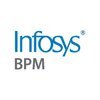

Aarvee Associates




Aarvee Associates Accountant Interview Questions and Answers
Q1. Could you explain a specific GST notice you have dealt with and describe in detail how you managed to resolve it?
Resolved a GST notice by identifying errors in input tax credit calculation and providing supporting documentation.
Identified errors in input tax credit calculation
Reviewed purchase invoices and reconciled with GST returns
Provided supporting documentation to prove correct input tax credit claims

Q2. What are the due dates and forms required for GST returns?
GST returns are filed monthly, quarterly, or annually depending on turnover. Forms like GSTR-1, GSTR-3B, GSTR-4, etc. are required.
GST returns are filed monthly, quarterly, or annually based on turnover
Due date for GSTR-1 is 10th of the following month, GSTR-3B is 20th of the following month, GSTR-4 is 18th of the month following the quarter
Forms required include GSTR-1 for outward supplies, GSTR-3B for summary return, GSTR-4 for composition dealers, etc.

Q3. What are the various types of GST returns, and can you explain them in detail?
Various types of GST returns include GSTR-1, GSTR-3B, GSTR-4, GSTR-9, etc.
GSTR-1: Monthly return for outward supplies
GSTR-3B: Monthly summary return for taxable supplies
GSTR-4: Quarterly return for composition dealers
GSTR-9: Annual return for regular taxpayers

Q4. What services are included under Reverse Charge Mechanism (RCM) in the Goods and Services Tax (GST)?
Services included under Reverse Charge Mechanism (RCM) in GST are those where the recipient of the goods/services is liable to pay the tax instead of the supplier.
Legal services provided by an advocate or a firm of advocates
Services provided by an arbitral tribunal
Services provided by an insurance agent
Services provided by a recovery agent
Services provided by a director to a company
Transportation of goods by road services provided by a goods transport agency
Services provided ...read more

Q5. What is the impact of Input Tax Credit (ITC) in the Goods and Services Tax (GST) system?
Input Tax Credit (ITC) in GST allows businesses to reduce their tax liability by claiming credit for taxes paid on inputs.
ITC helps in preventing cascading effect of taxes, where taxes are levied on taxes already paid.
It encourages compliance as businesses need to ensure proper documentation and reporting to claim ITC.
ITC reduces the overall cost of goods and services, making them more competitive in the market.
Example: A manufacturer can claim credit for the GST paid on raw ...read more

Q6. What are the different sections of TDS and can you provide a brief explanation of each?
The different sections of TDS include salary, interest on securities, dividends, interest other than interest on securities, winnings from lotteries, etc., and income from house property.
Salary: TDS is deducted from the salary paid to employees.
Interest on securities: TDS is deducted on interest earned from securities like bonds, debentures, etc.
Dividends: TDS is deducted on dividends paid by companies to shareholders.
Interest other than interest on securities: TDS is deducte...read more

Q7. What are the steps to create journal entries in Tally?
Steps to create journal entries in Tally
Open Tally and select the company for which you want to create journal entries
Go to 'Accounting Vouchers' section
Select 'F7: Journal' to create a new journal entry
Enter the date, ledger accounts, and amounts for debit and credit sides
Save the journal entry by pressing 'Ctrl+A'





Interview Process at Aarvee Associates Accountant

Top Accountant Interview Questions from Similar Companies









Reviews
Interviews
Salaries
Users/Month












